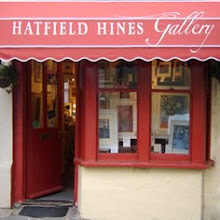 London buses dripped in the garage, planes stayed marooned on runways and high streets were abandoned as one in five of us stayed home with the school kids to watch the UK's heaviest snowfall in 18 years.
London buses dripped in the garage, planes stayed marooned on runways and high streets were abandoned as one in five of us stayed home with the school kids to watch the UK's heaviest snowfall in 18 years.Economic analysts forecast that all-in-all
'Snowmageddon' will have cost the UK economy some £1.2bn - so was there any upside?
Douglas McWilliams, chief executive of the Centre for Economics and Business Research, says that our
'Arctic Incident' would actually benefit certain sectors of the economy:
"Consumers spend more on heating and on warm clothes, and any accidents or structural damage leads to increased spending on repairs."In the meantime though,
unoccupied City traders busied themselves building rival snowmen in Paternoster Square, whilst
 Nurses at St Thomas's hospital
Nurses at St Thomas's hospital in London were delighted to receive 'not just any' consignment of luxury cakes and sandwiches when snow closed
Marks & Spencer's nearby Victoria Station branch.
Supermarkets were also smiling -
Asda reported a 40% leap in sales of Vimto and Ribena, and a
10% pick-up in whisky sales, whilst
Tesco launched
'Operaton Snowplough', clearing shelves to make room for supplies of
emergency custard, as well as pies, soup, thermal socks and brandy.
So what is Snow? Contrary to popular belief it is NOT frozen rain. Snowflakes are created inside clouds when tiny ice crystals collide and stick together. Most snowflakes melt on their way to the ground and fall as rain. (So rain is actually melted snow, not the other way round!) Only when the air near the ground is cold enough will snowflakes fall as snow.

All snow crystals are six-sided (hexagonal) and
no two snow crystals have ever been found to be identical. Some snowflakes can grow to be 5-7 cm (2-3 in) across.
What affects the size of snowflakes? There are lots of different types of snow, as skiers know only too well. When it is very cold,
"dry" snow falls - the ice crystals do not stick together easily and the snow is fine and powdery - in very cold dry conditions
‘diamond dust' ice crystals may fall. At less cold temperatures near freezing point,
"wet" snow falls and much larger snowflakes form, especially if there is no wind.
When fresh snow is moist enough to stick together,
snowrollers may form on hillsides or in large fields. A ‘snowroller' is like a cylindrical snowball in shape and is blown by winds of more than 32 km/h (20 mph) until it grows too large to travel any farther. Snowrollers can reach nearly 1.5 m (4 ft) in diameter.
 A steam spectacular is to be held on North Norfolk's Poppy Line this weekend.
A steam spectacular is to be held on North Norfolk's Poppy Line this weekend.








